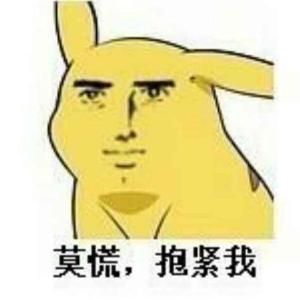What is the difference between a river and a river?
川跟河有如下区别:
“川”通常是指
1、河流或是山间;
2、高原间的平坦而低的地带;
但在秦汉以前,河流称为“川”或“水”
“河”通常是指天然的或人工的大水道,但在秦汉以前,基本是黄河的专称。
河(江、河流、江河、河道),是指陆地表面成线形的自动流动的水体。世界不少著名河流像长江、亚马逊河都是这样流动的。河流一般是在高山地方作源头,然后沿地势向下流,一直流入像湖泊或海洋般的终点。
Professional answer
There are the following differences between a river and a river:
“Chuan” usually refers to
1. Rivers or mountains;
2. Flat and low areas between plateaus;
But before the Qin and Han Dynasties, rivers were called “chuan” or “shui”
“He” usually refers to large natural or artificial waterways, but before the Qin and Han Dynasties, it was basically a special name for the Yellow River.
He (jiang, river, river, river channel) refers to a body of water that flows automatically in a linear shape on the surface of land. Many famous rivers in the world, such as the Yangtze River and the Amazon River, flow in this way. Rivers generally have their source in high mountains, then flow down along the terrain, and flow into a destination like a lake or an ocean.
There is no difference between "河" and "川"
He: Original meaning: Yellow River. Now it means a general name for rivers.
Chuan: Pictograph. The oracle bone script has banks on the left and right and flowing water in the middle, just like a river. Original meaning: river. Now it also means river.
3 and He themselves are different in the speed of the water flow. Generally, the speed of the river is slower, while the speed of the river is faster, and there will be some drops in the places where it passes, so waterfalls or faster waters will be formed.
You can distinguish them by size. The natural smaller one is called "川".
He refers to something bigger, you can imagine the Chinese river.
Artificial rivers are also generally called "河".
But before the Qin and Han Dynasties, rivers were called "chuan" or "shui" (but there are exceptions, such as "Shan Hai Jing" says: "Kunlun Mountain is ten thousand miles long and wide, ten thousand miles high, fifty thousand miles away from Hao Mountain, with Qinghe, Baihe, Chihe and Heihe surrounding it."
"He" usually refers to a large natural or artificial waterway, but before the Qin and Han Dynasties, it was basically a special name for the Yellow River.
The difference between streams, rivers, rivers and rivers is defined by the flow of the water. Compared with the four, they are Small, medium, large, and even larger.
Shuixi is commonly known as a creek, with low water flow and large numbers. People are more common and can be seen in front of and behind houses and in the fields.
Chuan is formed by the confluence of countless streams. Compared with streams, it is much larger and can accommodate ordinary wooden boats and bamboo rafts.
Rivers are formed by the confluence of many streams or several small streams, with large flow and rapid water flow.
Finally, there are rivers, which have large flow and flow through a wide area, and the water is fierce and surging. China's Yellow River and Yangtze River are both large rivers.
Similar Q&A
recommend How to view sales of several months on Amazon?
E-c News Continuously pushing e-commerce knowledge to you








Latest Q&A More
-
Do I need a trademark to open a franchise store on Pinduoduo to sell books?
#Pinduoduo#
-
How to withdraw from a Pinduoduo store
#Pinduoduo#
-
How to withdraw from Pinduoduo merchants
#Pinduoduo#
-
How to pay fees when closing a Pinduoduo store
#Pinduoduo#
-
How to withdraw from Pinduoduo
#Pinduoduo#
-
Which store on Pinduoduo is authentic?
#Pinduoduo#
-
Which stores on Pinduoduo can buy genuine products?
#Pinduoduo#
-
How to check the store under Pinduoduo
#Pinduoduo#
-
How to receive Pinduoduo online game products
#Pinduoduo#
-
How to sell the electronic version on Pinduoduo
#Pinduoduo#
E-c News 2025-07-28 22:47:57

- African netizens use China Africa cross-border e-commerce platform for online shopping
- how is the new seller of cross-border e-commerce doing?
- how can cross-border e-commerce Amazon sell on Amazon platform without goods?
- Amazon store opening process and cost analysis!
- Amazon plans to expand its pharmacy business on a large scale and will add same day delivery service



